Minerals
Type of resources
Available actions
Topics
Keywords
Contact for the resource
Provided by
Years
Formats
Representation types
Update frequencies
Service types
Scale
-
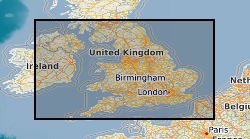
Derived from data collated from the 2005 Aggregate Minerals Survey, carried out by BGS for the Department for Communities and Local Government (CLG) which provide an in-depth and up-to-date understanding of regional and national sales, inter-regional flows, transportation, consumption and permitted reserves of primary aggregates for England and Wales. The information is used to monitor and develop policies for the supply of aggregates. This data set depicts the flow of crushed rock aggregate between the regions of England and Wales. The data originator also has similar data for sand and gravel and also the same data derived from the 1997 and 2001 Aggregate Minerals Surveys.
-
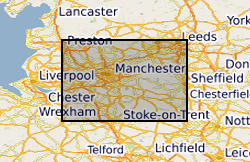
3200 mineral veins (i.e. lead, fluorspar) of the Southern Pennine Orefield within the Peak District National Park captured as a single dataset in 1983 from BGS 1:10 560 published maps with additional veins from referenced literature. The data covers a small, very limited area. Also includes several pipe and flat deposits. Also includes mapped faults. The dataset is approximately 99.5% complete. Uses for the data include economic geology, mineral resources, mine hazards. Veins are numbered but not named.
-
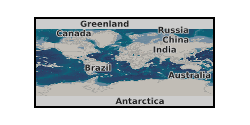
Zeta potential measurements of the fluorcarbonate mineral parisite-(Ce), under water, supernatant and collector conditions. Zeta potential measurements can be used to indicate the surface behaviour of a mineral under different reagent conditions. Mineral surface behaviour is important in processing and extracting minerals from their host ore, which can be energy intensive. Parisite-(Ce) is a fluorcarbonate mineral which contains rare earth elements. Rare earth elements are important in a wide range of products from iPhones to wind turbines.
-
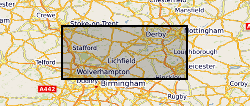
The full title of this project is" Studies into metal speciation and bioavailability to assist risk assessment and remediation of brownfield sites in urban areas" and is funded by NERC under the URGENT thematic programme form 1998-2001. The project is being undertaken by a consortium of workers from the Imperial College, University of Nottingham, and the British Geological Survey. Innovative collaborative and multi-disciplinary research will be applied to the interpretation of urban geochemical maps and associated meta-datasets to assist decision making by local authorities in the redevelopment of brownfield sites. Source apportionment, speciation and bioavailability of potentially toxic heavy metals will be studied at representative conurbations in the UK Midlands region. Scanning electron microscopy, chemical extractions and soil solution and vegetable analysis, will be integrated with high precision isotopic analyses of Pb and other potential toxic metals in this study. The results will be available as maps in GIS format to provide a generic decision support system for quantitative health risk assessment.
-
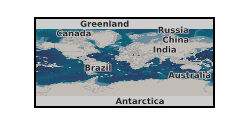
Non-contact Atomic Force Microscopy images (NC-AFM) of surface nanobubbles on the carbonate mineral dolomite. Since surface nanobubbles were first imaged in 2000, they have been of growing interest to research due to their long lived properties, with reported lifetimes as long as several hours. Images of nanobubbles were produced under water, collector and depressant conditions using the air water supersaturation method. These are the first images of surface nanobubbles on dolomite. Surface nanobubbles could play a part in the processing of dolomite via froth flotation. These images lay a foundation for future analysis of the effect of nanobubbles in flotation.
-
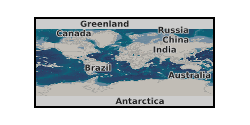
A compilation of mineral and glass compositions erupted at Villarrica volcano, Chile, measured by electron microprobe. Data are sourced from published articles, theses and unpublished works. Minerals and glasses are from deposits erupted over the last 100ka. This is supporting data for the manuscript entitled 'Insights into Magma Storage Beneath a Frequently Erupting Arc Volcano (Villarrica, Chile) from Unsupervised Machine Learning Analysis of Mineral Compositions' by F. O. Boschetty, D. J. Ferguson, J. A Cortés, E. Morgado, S. K. Ebmeier, D. J. Morgan, J. E. Romero and C. Silva Parejas.
-
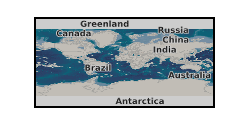
The object of the scoping study was to assess the feasibility of creating a BGS International Minerals Data Library by first reviewing the nature and extent of minerals-related data holdings accumulated by BGS overseas projects in the last 35 years. Other important considerations such as data quality, utility and ownership are also addressed. Minerals-related information is regarded as geological, geochemical and geophysical data which have relevance in mineral exploration, prospect assessment, resource evaluation and ore deposit exploitation. This includes surveys and multidisciplinary studies on all scales and covering a wide range of disciplines/methodologies. The only aspects that are specifically excluded from the inventory are those projects that deal solely with hydrogeological investigations, development of hardware, software and laboratory techniques, training, institutional restructuring and management. This report lists the information holdings and their various formats summarised on a geographical basis and puts forward a proposal for the development of a digital BGS International Minerals Data Library for Industry and Government.
-
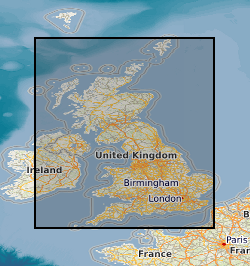
This layer of the map based index (GeoIndex) shows the locations of known mines, mineral showings and localities, including sites where minerals of economic interest have been identified in panned concentrates. The information for the index is taken from the Mineral Occurrence Database. The Mineral Occurrence Database holds information on mineral occurrences in the UK including locations of known mines, deposits, prospects and mineral showings, including sites where minerals of potential economic interest have been identified in panned concentrates. Data is normally taken from published sources or from internal BGS records, such as field sheets, rock and stream sediment collection cards. Data compilation started ca. 1994 and the database currently holds about 13 000 records, but details of many more old workings and occurrences remain to be added.
-
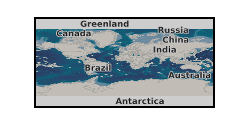
Non -contact atomic force microscopy (NC-AFM) images of surface nanobubbles on the fluorcarbonate mineral synchysite. Synchysite is a rare earth fluorcarbonate mineral which has previously been relatively unstudied. Since nanobubbles were first imaged in 2000, they have been thought to play a intigral role in mineral processing. Images of nanobubbles were produced under collector reagent conditions favourable to flotation. These are the first images of nanobubbles on the fluorcarbonate mineral synchysite. Nanobubbles at the surface of synchysite improve the understanding of both flotation and nanobubble formation.
-
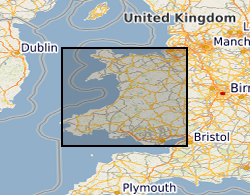
This dataset provides digital spatial information on the location of mineral resources in Wales at a scale of 1:50 000. The term ‘mineral resources’ has a definition under international standards that includes both an economic and geological dimension. These data are based primarily on mapped geology with limited assessment of economics. Therefore, the term ‘mineral resources’ is used here in a broad sense. The dataset allows users to visualise the extent and distribution of mineral resources and to relate them to other forms of land-use (such as urban areas or designated environmentally sensitive areas) or to other factors (such as transport infrastructure and conservation information). The British Geological Survey (BGS) was awarded a grant from the Welsh Assembly Government Aggregates Levy Fund in 2009 to provide a comprehensive, relevant and accessible information base to enhance the sustainability of mineral resources for Wales. BGS co-funded this project through its Sustainable Mineral Solutions project. This work was completed in 2010. This dataset comprises the digital GIS files which were produced through this project. The major elements of minerals information presented on the maps are; the geological distribution of all onshore mineral resources in Wales, the location of mineral extraction sites, the recorded occurrences of metallic minerals, the recorded location of former slate quarries and significant areas of slate waste and the recorded location of historic building stone quarries. In 2020 minor revisions to geometry and attributes were made in in response to minor corrections that were required. The paper maps were not re-released with these data updates. Point data for mineral occurrence and mine site data has not been included in this revision as these data are superseded by other BGS datasets, such as the BGS BritPits database of mines and quarries. The BGS Mineral Resource data does not determine mineral reserves and therefore does not denote potential areas of extraction. Only onshore, mainland mineral resources are included in the dataset. This dataset has been produced by the collation and interpretation of mineral resource data principally held by the British Geological Survey. The mineral resource data presented are based on the best available information, but are not comprehensive and their quality is variable. The dataset should only be used to show a broad distribution of those mineral resources which may be of current or potential economic interest.
 NERC Data Catalogue Service
NERC Data Catalogue Service